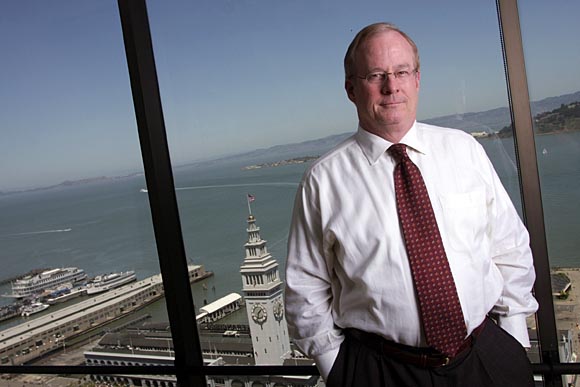For one thing, Joel was able to get a cost estimate for relocating the wires without requiring us to pay $3000 up front. This is rather unorthodox, and as a result we don't have some details on why the costs are so high for relocating the poles at 835. Still, I appreciate what he's trying to do. Most folks from the utility company haven't been nearly as cooperative.
What ultimately came out of our discussion was a series of questions:
- How high are the current utility poles? Clearly they are not all the same height; there's a utility pole at about 571 Reina Del Mar which looks considerably higher. The trees only grow 50-60 feet high.
- How far away is each tree from the primary lines? We need 10 feet of clearance from the highest wires (12k Volts). PG&E subcontracts out that risk determination to WECI (Western Environmental Consultants). So that we could have an current measure, Joel requested an inspection (and WECI showed up this morning). It seems that a couple of trees will need some minimum trimming, but don't have to be removed today. Lori Cuesta was the field supervisor inspecting the trees today, and she spoke with me for a good half hour or so. She believes that some minimum trimming can buy us at least 6 months. The trimming will cut the offending fronds at the mid point (so it looks ugly, but certainly shouldn't be fatal). The actual trimming of the trees goes to yet another sub-contractor, Asplundh, who will most likely be out here next week (April 12- 16).
- How fast do the trees grow? Well, from some limited Internet research, I found one article in the Wall Street Journal of all places, quoting Valley Crest experts that the tress grow about 6 inches a year. Given our cool climate, our trees may grow even slower than that. In any case, we can raise the poles 10 feet, which would give us almost 20 years (assuming the poles are only at 50 feet today.) Given that the trees are about 100 years old and they are reaching the height of the poles, it would stand to reason that the poles are 50 feet, and the trees grow 6 inches per year.
- So what does it take to raise the poles? As it turns out, Amy Mayo and her husband Stefan ran into an old friend who grew up with Stefan in Pacifica. This friend (I'll leave his name out for now) currently works for PG&E as a lineman and also lives in Vallemar. He explained that raising the poles is a relatively trivial matter. Aside from shutting off the power, it would take 4 men 4 hours to raise a pole. The guy offered to volunteer his time to save these trees and offered to try and find a few other volunteers. With a few trained volunteers, we may be able to raise enough poles to buy us enough time until we are able to get the wires underground.
I would even go so far as to argue that it would benefit PG&E both financially and aid in building long term good will with our community. Rather than spending millions of dollars on subverting laws through ballot measures such as proposition 16, PG&E would be better served helping communities like ours set up an electric infrastructure that is much more sustainable. The utility must spend significant amounts of money, (and at union/ overtime rates) every year during our severe winter storms to maintain this third-world power infrastructure.
Of course, the residents would benefit from the natural beauty from wires being under ground, the increase in property values, and the reduction in service interruption (no more outages during storms). And the city too would benefit, since it would be able to boast an even more beautiful neighborhood, and the added property values would translate into increased tax revenue.
Everyone wins if we could get these wires underground. We just need some help with the cost estimates and moving the wires on the first few trees.
We really need to get through to this guy -->> You could try emailing him, but I think we need something a little more face to face. Thoughts? |  |


No comments:
Post a Comment